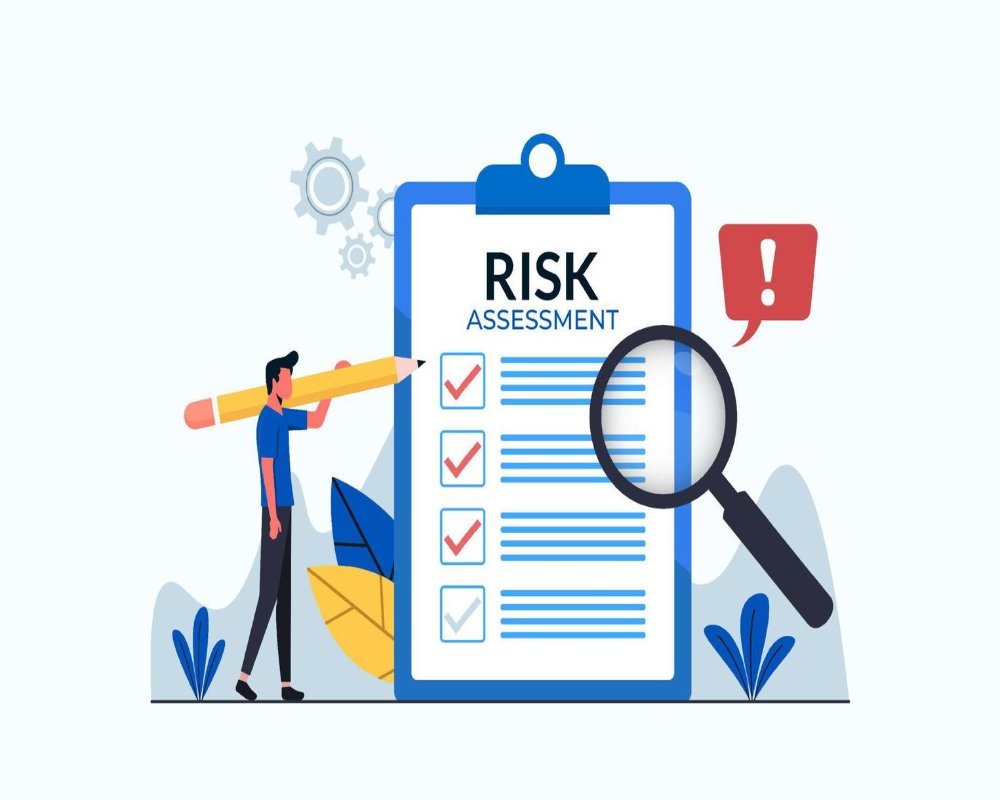Introduction
Risk assessment in industrial investment is the systematic process of identifying, analyzing, and evaluating potential uncertainties that may impact the success of an industrial project. It serves as a strategic tool that enables investors, developers, and planners to anticipate possible disruptions and implement preventive or corrective measures. Given the complex nature of industrial investments, which often involve significant capital, regulatory involvement, and long-term commitments, risk assessment plays a vital role in enhancing decision-making and ensuring project resilience.
Identification of Risk Categories
The first step in industrial risk assessment is identifying the various types of risks that can influence the investment. These risks are typically categorized into financial, operational, market, environmental, legal, and geopolitical risks. Financial risks include interest rate fluctuations, funding shortfalls, and cost overruns. Operational risks may arise from supply chain breakdowns, machinery failures, or labor disputes. Market risks involve demand volatility, price competition, and customer behavior changes. Legal and environmental risks are tied to compliance with laws, environmental standards, and regulatory approvals.
Analysis of Risk Impact and Probability
Once risks are identified, each is analyzed in terms of its likelihood of occurrence and the severity of its impact on the investment. This helps prioritize risks and determine where mitigation efforts should be focused. For example, a high-probability risk with a severe impact, such as a delay in environmental clearance, requires more immediate attention than a low-impact, infrequent event. Risk matrices and scoring models are commonly used tools to visualize and rank risks effectively.
Evaluation of Project Vulnerabilities
Risk assessment also involves evaluating specific vulnerabilities within the project framework. These may include gaps in financial planning, overreliance on single suppliers, lack of skilled labor, or technological limitations. Understanding these weak points allows investors to design solutions that enhance the robustness of the project, such as diversifying suppliers or incorporating contingency funds.
Development of Mitigation Strategies
A key outcome of risk assessment is the formulation of mitigation strategies. These strategies aim to reduce the likelihood of risk occurrence or minimize their impact. For example, financial risks can be mitigated through hedging or phased investment planning. Operational risks can be addressed by implementing preventive maintenance and building strong supplier relationships. Environmental and legal risks are managed through due diligence, compliance frameworks, and stakeholder consultations.
Integration with Decision-Making and Planning
Risk assessment is most effective when integrated early into the investment planning process. It informs site selection, technology choices, financial structuring, and project scheduling. By incorporating risk considerations into the initial stages of project development, investors can create more adaptive and resilient plans that withstand market and operational fluctuations.
Continuous Monitoring and Review
Risks evolve over time as external conditions change. Therefore, risk assessment must be a continuous process, with regular reviews and updates throughout the lifecycle of the industrial investment. Ongoing monitoring ensures that new risks are identified and addressed promptly and that existing mitigation measures remain effective.
Enhancing Investor Confidence and Project Stability
Comprehensive risk assessment contributes to building investor confidence by demonstrating that potential threats have been thoughtfully evaluated and managed. It also improves project stability by reducing the likelihood of unexpected disruptions. Transparent risk communication with stakeholders enhances trust and facilitates smoother project execution and governance.
Conclusion
Risk assessment in industrial investment is a foundational process that strengthens project planning, safeguards resources, and ensures long-term sustainability. By systematically identifying, analyzing, and managing potential uncertainties, stakeholders can reduce exposure to disruptions and improve overall investment outcomes. In a dynamic industrial environment, risk assessment is not merely a protective measure but a strategic advantage that enables informed decisions and resilient growth. As industrial projects grow in scale and complexity, the importance of robust risk assessment will continue to rise.
Hashtags
#RiskAssessment #IndustrialInvestment #InvestmentStrategy #FinancialRisk #RiskManagement #BusinessInvesting #IndustrialGrowth #InvestmentAnalysis #RiskMitigation #CapitalInvestment #MarketAnalysis #InvestmentPlanning #FinancialSafety #IndustryTrends #RiskEvaluation #InvestmentOpportunities #DueDiligence #AssetManagement #EconomicRisk #StrategicInvesting


